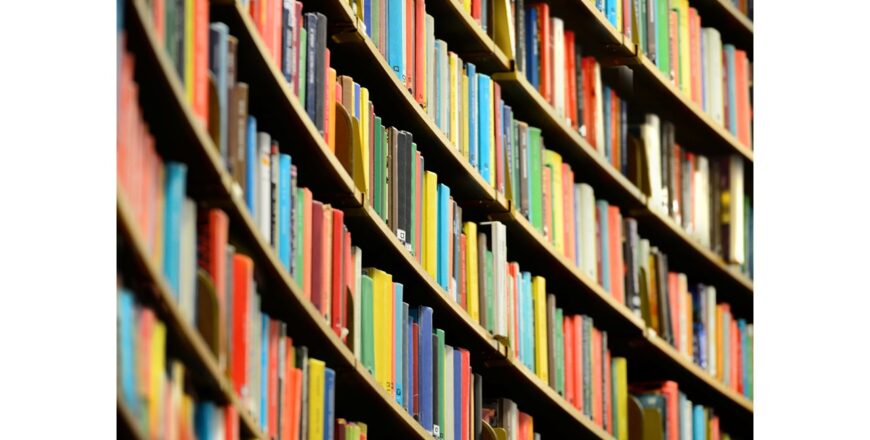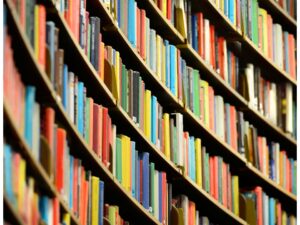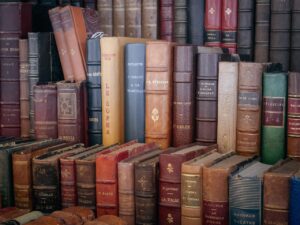Communication Nation: How Our Ancestors Connected and the Records They Left Behind (19th to mid-20th centuries)
- Description
- Curriculum
From letters and telegrams to party lines and postcards, discover how Americans shared news and stories across generations. Explore 1830–1950 communication methods—print, post, sound, and signal—the records and ephemera. Learn how to find and interpret newspapers, photos, postal records, early audio, and broadcast media to uncover your ancestors’ voices and communication networks.
Day 1, January 26
Hear Ye, Hear Ye! From Town Criers to the Grape Vine, 8:30-9:45
Instructor: Pamela Vittorio
Before modern media, news traveled by word-of-mouth, broadsides, carrier pigeons, and gossip columns. Discover how messages traveled: from handbills or pamphlets to wanted posters and local “gossips.” We’ll examine records like early social pages, letters to the editor, and community notices to trace how your ancestors learned about events—and how their lives intersected with the buzz of the day.
Social Etiquette in the 19th Century: The Rise & Evolution of Calling Cards, 10:15-11:30
Instructor: Gena Philibert-Ortega
Calling cards were more than social niceties—they were communication tools. Learn how these elegant tokens reveal details about status, etiquette, and relationships. We’ll explore card designs, social rules, and where to find collections that offer insight into how people introduced themselves, paid visits, and built networks in the 1800s.
Covering the News: Newspapers, Reporters, and Journalists, 1:00-2:15
Instructor: Pamela Vittorio
Newspapers shaped public opinion and preserved your ancestors’ stories. Explore the evolution of journalists from 1830 to 1950, and how they gathered and shared news. Learn how to locate published mentions of your relatives online and in repositories. We’ll cover popular papers, newspapers in various languages and strategies for locating them. Learn more about the evolution of reporting across political, cultural, and social landscapes.
Read All About It: Newspaper Distribution from the 19th to 20th Centuries, 2:45-4:00
Instructor: Pamela Vittorio
Whether delivered by newsboys, sold at stands, or delivered to rural homes, newspapers were a daily presence. This session looks at how news reached readers, incorporating first-person accounts of newsies or newspaper delivery boys or girls. We look at how subscriptions worked and trace your ancestors’ interactions with the press—whether as readers, sellers, or community contributors.
Day 2, January 27
The Writing on the Walls: Advertisements, Flyers, Posters & Broadsides, 8:30-9:45
Instructor: Pamela Vittorio
From shop windows to barn doors, printed ephemera caught our ancestors’ attention. Explore advertisements, posters, flyers, and broadsides as historical records. We’ll look at how these materials promoted products, people, and politics—and how they influenced everyday decisions, including migration, civic involvement, and the economy.
Drop Me a Line: Stationery & the Art of Letter Writing, 10:15-11:30
Instructor: Pamela Vittorio
Letters offer unmatched personal insight. Learn how to date undated correspondence through paper, handwriting, and folding styles. This session explores various types of stationery, crosshatching in letters, and ink types—plus where to find family letters in archival manuscript collections and what they reveal about vital data, emotions, relationships, and socio-historical contexts of our ancestors’ lives.
Ringing Twice: Couriers, Letter Carriers, and Post Office Workers, 1:00-2:15
Instructor: Pamela Vittorio
Mail carriers were community fixtures. Explore how your ancestors sent and received letters through local post offices, general stores, and personal couriers. We’ll examine postal notices, messenger records, and how to trace the names of those who handled your family’s mail in an era of expanding communication networks.
The Postmasters: Records of the U.S. Post Office, 2:45-4:00
Instructor: Jeanette Sheliga
Postmasters played key roles in local government and communication. This session explores U.S. Postal Service employee records, appointment books, and salary ledgers—often held at the National Archives. Learn how to discover whether your ancestor worked in or interacted with the post office, and what those records can reveal.
Day 3, January 28
Over the Wires: Telegrams/Telegraphy and Telegraphers, 8:30-9:45
Instructor: Pamela Vittorio
Telegrams quickly and efficiently revolutionized urgent messaging. Explore how telegraphers relayed coded messages across distances, and where surviving telegrams or telegraph company records, like Western Union, can be found. We’ll examine the language of the wire and how to interpret these powerful, sometimes emotional documents in family history.
Take a Memo: From Typing & Stenography to “Girl Fridays,” 10:15-11:30
Instructor: Pamela Vittorio
Business and office communication transformed with the typewriter, shorthand, and the rise of clerical staff. Discover how memos, typed letters, and stenographic notes reflect occupational roles—especially for women. This session highlights employment records, office correspondence, and the devices that revolutionized professional communication from the late 1800s onward.
Wish You Were Here…” Postcards and Deltiology, 1:00-2:15
Instructor: Michael Cassara
Postcards offered quick, colorful ways to stay in touch. We’ll explore the art and messages of postcards, including real photo postcards and holiday greetings. Learn how to date and locate postcard collections, and how they reveal insights about place, personality, and personal networks.
Worth a Thousand Words: Our Ancestors in Front of the Camera and Behind the Lens, 2:45-4:00
Instructor: Pamela Vittorio
From daguerreotypes to cabinet cards, early photography captures more than appearances—it reflects context. Learn how to date photos by format, clothing, or photographer marks, and how to use companion records like directories and studio ads to place images in your family’s timeline. We’ll discuss various types of cameras your ancestors might have owned, and how to identify the photographs they produced.
Day 4, January 29
I’ll Put You Through: Telephones, Operators, and Party Lines, 8:30-9:45
Instructor: Pamela Vittorio
Telephones changed how families and communities connected. Explore switchboards, female telephone operators, and party lines. We’ll discuss how to find early telephone directories, what they reveal about place and profession, and when your family may have first picked up the receiver to connect with the outside world.
Can You Hear Me Now? Early Recordings and Where to Find Them, 10:15-11:30
Instructor: Pamela Vittorio
Discover the world of early sound—from wax cylinders to 78s. Explore how families recorded or listened to music, speeches, or personal messages via early phonographs like the Victrola. We’ll cover archives that house audio collections and offer tips on accessing rare recordings that may include your ancestors or their communities.
From Semaphores to Parades: Military Communication, 1:00-2:15
Instructor: Annette Burke Lyttle
From semaphore flags to ceremonial parades, communication played a critical role in military life. We’ll explore records tied to signaling, public celebrations, and veterans’ parades. Discover how your ancestors communicated during service and how to find their stories through military correspondence and commemorative records.
Tap or Talk: From Morse Code to Walkie-Talkies, 2:45-4:00
Instructor: Pamela Vittorio
Explore how Morse code and other communication methods served soldiers, railroad workers, and hobbyists alike. This session examines training materials, amateur radio licenses, and wartime devices—including walkie-talkies of the late 1930s. Learn how to trace ancestors who learned to “tap” their way through vital messages during wartime or peacetime service.
Day 5, January 30
Over the Air Waves: Radio and Radio Messaging to WWII, 8:30-9:45
Instructor: Pamela Vittorio
Radio became a powerful presence in homes and hearts. From music and serial dramas to presidential broadcasts, we’ll explore the rise of radio from the 1920s through WWII. Discover station archives, family radios, and how to trace ancestors who listened in—or even went on air.
Get a Handle on It: Ham Radios and Other Devices, 10:15-11:30
Instructor: Pamela Vittorio
Ham radio operators connected communities long before the internet. Learn how your ancestors might have joined this DIY communication world. Explore ephemera like QSL cards, operator logs, and FCC licenses, and how to trace HAM radio involvement through hobbyist groups, wartime service, or global correspondence.
WWII Newsreels and PSAs: News from the Movie House, 1:00-2:15
Instructor: Pamela Vittorio
During WWII, Americans watched global events unfold at the theater. Learn how newsreels and public service announcements informed—and shaped—public opinion. We’ll examine archives like NARA for military clips, war bond campaigns, and footage that might feature your ancestors, their hometowns, or their service.
Please Stand By: Early TV and Making the News–to the 1950s, 2:45-4:00
Instructor: Pamela Vittorio
As TV entered living rooms, families could witness history “live” as it happened. Explore how early broadcast news developed, how people reacted to seeing themselves or people from their communities on screen, and where to find preserved reels and scripts. This session shows how your ancestors both consumed—and helped shape—modern media.

Course runs 26-30 January
8:00am-4:30pm Mountain
Coordinator: Pamela Vittorio, MA, PLCGS
Faculty:
Gena Philibert-Ortega, MA, MAR
Michael Cassara
Jeanette Sheliga





